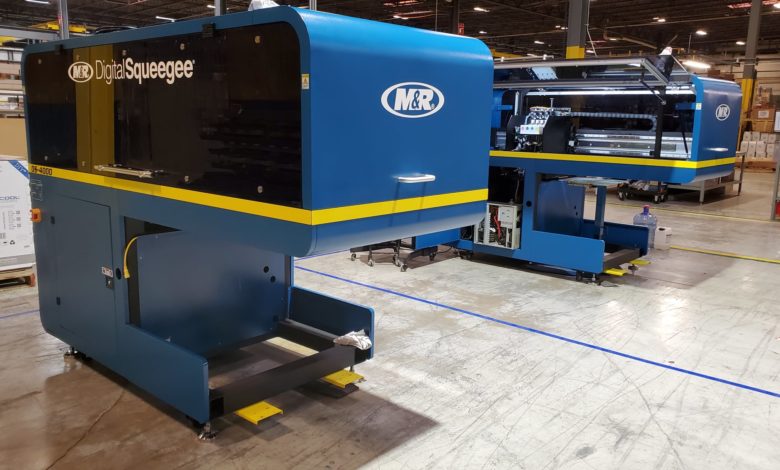
It’s mid-year 2021, and the garment decorating industry has transitioned from the dark days of the COVID epidemic into an environment with increasing demands in all sectors. The ability for printers to take advantage of these growing market opportunities is being challenged by supply chain shortages and increased prices for blank garments and printing consumables. As an equipment manufacturer, M&R is experiencing unprecedented price increases in raw materials and critical components. Beyond supply chain issues and higher prices, companies are facing shortages of skilled employees. Despite the challenges, business is booming and changing rapidly.
Where hybrid printing technology comes into the picture
We are amid a rise of eCommerce, accelerated by the pandemic and demands for smaller orders with more customization. Printers are successfully pivoting to meet their customers’ needs and expectations.
Hybrid technology, previously thought of as “the future,” is quickly becoming the present. This tech meets lower order numbers, prints on all fabrics types, and is capable of one-of-a-kind units with variable data. The tech has exploded into the embellishment industry with a powerful presence, allowing users to redefine themselves as unique and technically capable in an on-demand market. At M&R, we are exploring new automation technology in underbase development, expanded water-based ink systems, and deep-diving into plastisol compatibility and applications. Hybrid is also allowing users to produce larger volumes with accuracy. Several markets use hybrid tech capability for photorealistic prints and repeatability, namely tour merch and retail brands.
The next generation of DTG printers has also arrived. Allowing for “retail looking” embellishments. Newer models are faster, more reliable, and give users more control of the artwork and color gamut than ever before. Integration of analog-style separation knowledge, screen print color-matching methods, fabric content, and printing techniques all integrate with this new technology. DTG printers can produce DTF (direct-to-film), print on synthetics and hoodies, and meet expectations of a consumer transferring from brick-and-mortar to eCommerce purchasing. Gone are the days of convincing an embellishment customer to go digital, where they felt they were giving up something. Instead, the products are meeting or exceeding expectations.
Future factory workflow
The user experience is also a priority in the development of these new systems. Scan-to-print software and autonomy are critical in future factory workflow. For unit-of-one products to remain profitable, our entire print model needs to be streamlined. The future factory is a volume-driven print model. Various digital, analog, and hybrid equipment meet the print demand needs of multiple volumes. Hybrid print technology meets the small volume through large volume, aligning with screen printing’s largest volume output. DTG models meet one-of-a-kind volume output, aligning where hybrid volumes begin.
Indexing systems on DTG can drive high volume one-of-a-kind output, allowing for a machine-determined volume versus an operator-determined volume with stand-alone DTG. Modular indexing DTG systems also offer security in being upgraded by section. When digital tech increases in efficiency and application precision, it can be upgraded with each module evolution.
Matching between volume devices is also possible, with hybrid being the direct link from screen print to digital. Digital development for retail and color matching and quick sampling for any application will be central to a volume-driven factory. A highly flexible digital development device gives users the flexibility to develop, meet customer expectations, and create samples for any application. A volume-driven factory localizes the supply chain for quick turnaround orders for smaller volume eCommerce, potentially on-shoring larger orders.
Finally, in the factory of the future, autonomy will be key. Recently, we visited a factory utilizing raw materials for machining and a factory for vertical farming. Two very different industries, two very different products. They had several characteristics in common: Repetitive tasks. I.e., moving, measuring, storing were performed by highly efficient, human-aware, autonomous vehicles.
Both smart factories we visited operated under a command center, offering real-time data for factory efficiency. Transparency of the factory efficiency was central and machine-generated, meaning some labor/personnel were reduced. Both factories were modular. One of them creates and machines parts using pod-like sections to maximize efficiency and waste, so each machining application turns the highest yield with the greatest cost efficiency.
The takeaway: Future smart factories in the embellishment industry can be more localized with less footprint. Operating under LEED certification, with customized application modules, will create an economic moat for the operation.



